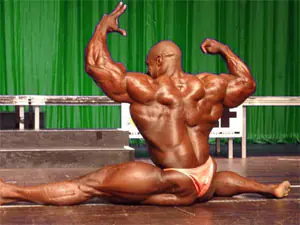Not all experts unconditionally recognize the benefits of flexibility exercises. Can you hurt yourself with regular stretching? The answer is yes, you can. And the point here is not at all about the risk of possible injuries.
As you know, some human muscles form two categories: agonists and antagonists. While some perform a certain movement, others counteract them. An imbalance in the training of agonists and antagonists always leads to unpleasant phenomena: hypertonicity of the pectoral muscles - to stoop; back muscles - accordingly to overstretching of the abdominal muscles; An excessively “clogged” biceps leads to lagging triceps, etc.
Stretching is only beneficial for those muscles that were subjected to strong contraction before it. This is why it is so advisable to include flexibility exercises in the cool-down after strength training. And, of course, there is no point in stretching muscles that are already “dangling” even more.
Since we have gradually delved into the nuances, we will consider all types of training on our topic. According to the literature, there are four of them: static, dynamic, ballistic and propriceptive.
When performing static exercises, you set the body a certain position, which provides a gradually increasing stretching load on the muscles. Dynamic exercises are based on full range of motion in a joint. Proprioceptive movements usually require a partner to perform. Ballistic moves are rarely used, although they are actually very effective. Usually these are simple swings performed from a static position. Unlike completely static ones, such exercises are great for warming up. Proprioceptive and ballistic stretches are beyond the ability of people without training and require coaching supervision. Static poses are easier than others, so let’s take them as the basis for our home splits complex.
Ideally, all split stretching exercises should be performed after a full strength training session with an emphasis on the legs. If you don’t train, but still want a flexible body, please, do at least a warm-up. Stretching cold ligaments is painful, dangerous and ineffective. To avoid this, 5-10 minutes of running or regular exercise with bending and squats will do.
Content- Anterior thigh.
- Muscles of the legs and buttocks.
- We connect the oblique abdominal muscles.
- Knee, hip joint, inner thigh.
Anterior thigh.
- 1.1. While maintaining balance in a standing position, bend one leg so as to press your heel to your buttock (it is not forbidden to help yourself with your hands). If you feel insufficient tension, squeeze your hips and rotate your pelvis - this will help you “grope” for the optimal position. Do this once for each leg.
- 1.2. Get down on one knee and place the other in front so that your shin is perpendicular to the floor. Gradually getting used to the tension, lower your pelvis as far as possible and straighten your sternum.
- 1.3. Without changing the position of your feet, shift your weight back and straighten your front leg. Your back thigh should be perpendicular to the floor. As you adapt, straighten your back. Thus, the posterior, as well as the gastrocnemius, hamstring and Achilles tendons are attached to the anterior wall of the thigh. Do the last two movements for each leg.
Muscles of the legs and buttocks.
- 2.1. Return to position 1.2, only this time the front leg is completely bent on the floor and the heel is pointing toward the groin. Place your hands on the floor in front of you, carefully transfer your weight to them. The hind leg is straight. Try to lower yourself onto your elbows and relax.
- 2.2. Bend the heel of your back leg toward your buttock. The front leg is still pointed towards the groin. Repeat the last two movements on the other leg.
We connect the oblique abdominal muscles.
- 3.1. Sit on your butt. One leg looks straight, the second is bent, the foot rests on the inner wall of the thigh of the first. Stretch your hands towards the toe of your straight leg. Try to grab your foot.
- 3.2. Without changing the position of your lower body, rotate your body so that both shoulders and the knee of your straight leg are in line. Reach your foot with one hand and lift the other up. Change your leg.
- 4.1. Sit cross-legged, bring your feet together, and try to lower your knees closer to the floor. When you can relax, lean your body forward a little more.
- 4.2. Straighten your legs without changing the angle between them. The result will be some kind of transverse twine. Over time, the angle between the legs will easily increase to 180°.
- 4.3. Bring your legs together straight in front of you, reach for your toes, and relax.
It is enough to do split stretching exercises 3-4 times a week.
Post Views: 75


